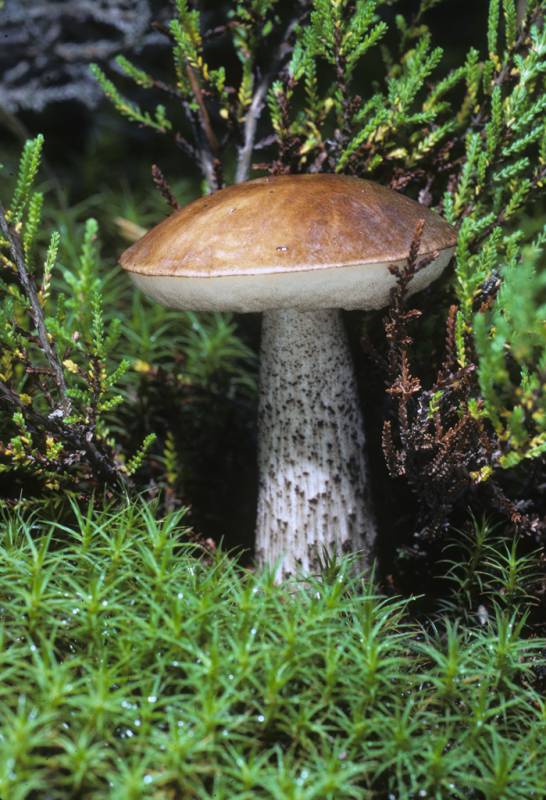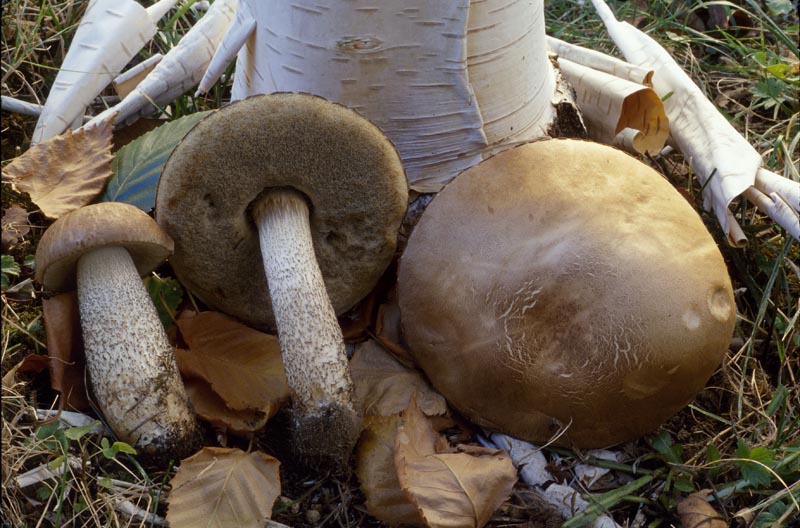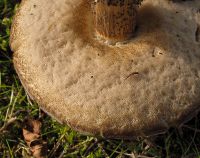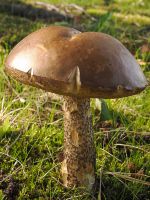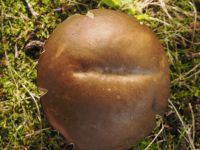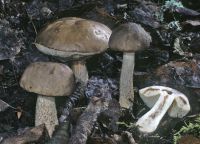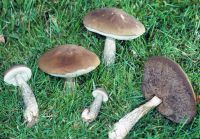Habitat: Common in urban and suburban settings and less so in natural habitats. Occurs with birch.
Conservation Status: Not of concern
brown birch-bolete, birch bolete, common scaber-stalk, birch scaberstalk
Leccinum scabrum is a medium-sized to large species whose caps are tan to grayish brown or darker brown or olive brown depending on age and condition; often the edge is paler. The cap surface varies from dry to viscid, may be somewhat tomentose, and can become cracked in age. The pores are cream to pale tan or olive buff, and the tubes are whitish and darken in age. The stipe is clavate, long in relation to the diameter of the cap, whitish, and ornamented with small blackish scabers. The flesh of young specimens, which is whitish, usually does not change much, although sometimes it can become somewhat brownish after exposure. The taste is mild, but the flesh is often soft and marshmallowy, thus limiting its culinary appeal. L. scabrum likely has been introduced into the PNW with planted birches. However, it also occurs in natural birch populations, such as in northern Idaho and Washington. In the city, L. scabrum often occurs with other birch-loving mushrooms such as Paxillus involutus, Lactarius plumbeus, L. glyciosmus, and Amanita muscaria.
PNW Herbaria: Specimen records of Leccinum scabrum in the Consortium of Pacific Northwest Herbaria database.
CalPhotos: Leccinum scabrum photos.

